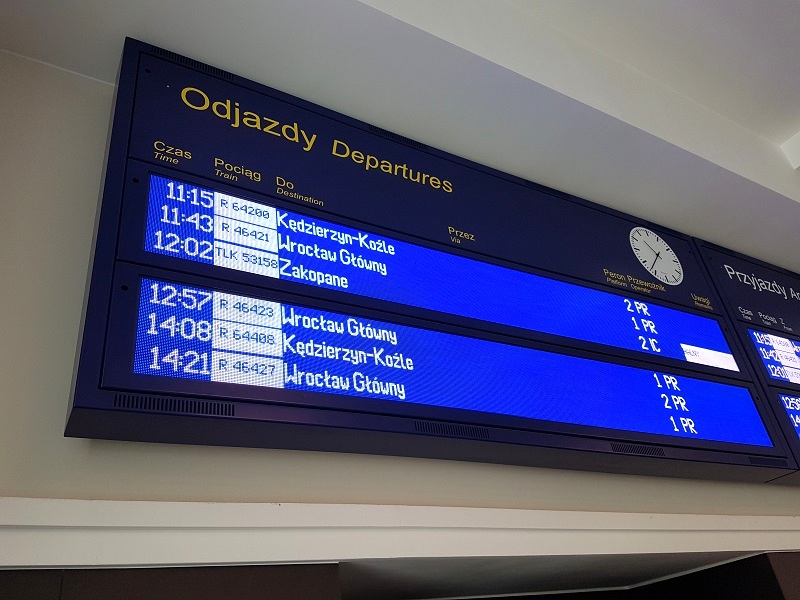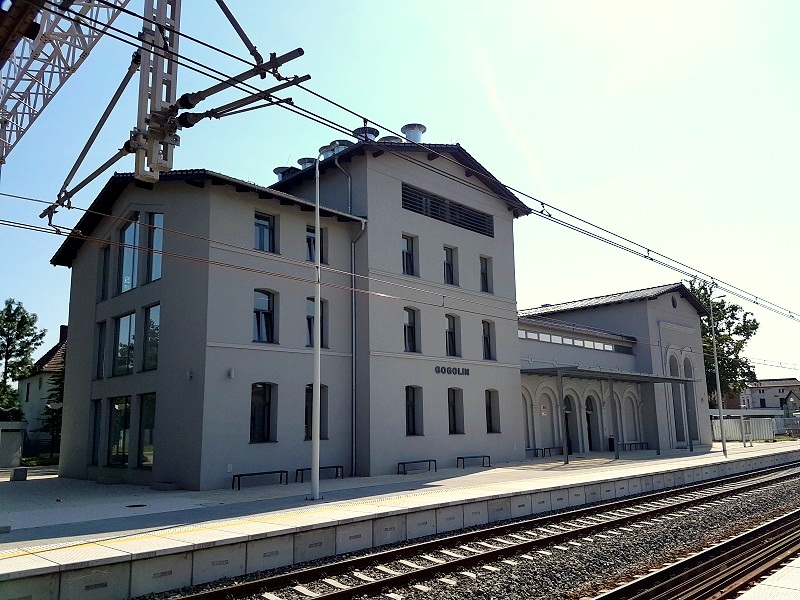


LED technology is much more efficient in terms of energy consumption. DYSTEN research shows that the differences in actual energy consumption between an LED display and LCD TFT display ranged from 300 to 500 percent. Taking into account the fact that the devices are to work 24 hours a day / 365 days a year, the annual savings can be considerable. DYSTEN recommends passenger information displays made in LED technology not only because of their energy efficiency but also because of their excellent visibility from a long distance and in full sun exposure.
LED departures arrivals display WGS7X2 LED
The station in Gogolin has been equipped with a 6-line LED arrivals departures display, which is designed to present the station’s timetable, including:
- times of train arrivals and departures
- types of trains and their numbers
- destination stations
- intermediate stations
- platform numbers
- train names
- possible delays
Information is generated and displayed automatically on six-line LED displays. The LED arrivals departures display has also been equipped with an analog clock.
The device complies with the following standards:
- EN 62368-1:2015-03
- EN 61000-3-2:2014-10
- EN 61000-6-2:2008
- EN 61000-6-4:2008
Complies with the provisions of the following directives:
- LVD 2014/35/EU
- EMC 2014/30/EU
- RoHs 2011/65/EU
Railway Station Gogolin
The train station in Gogolin was taken over by the city and renovated, thus it became a transfer center in Gogolin. The modernized facility houses not only a train station (waiting room, cash desks and an information point), but also a municipal library and a business incubator. The multifunctional station was co-financed by the Regional Operational Program.


